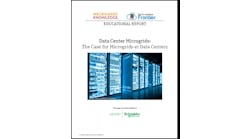Pervaiz Lodhie, President of LEDtronics.
LEDs have become the best thing in the world for solar energy. You see, solar panels only create energy during the daytime when there is sun – partial sun, full sun, whatever. What they do is they take a lot of sun and end up storing (depending on the number of panels) very little energy.
Unfortunately, most people don’t understand that solar panels are meant for devices using very little energy. For example, if your hair dryer uses 100 watts, it takes almost 200 watts of solar panel. If it is a 10-watt dryer, it will only take a 20-watt solar panel, which is much smaller. It all depends on how much energy your gadgets are going to consume.
Again, we’re talking about creating energy and then using it. Even if you store energy from a whole day’s worth of sun, you end up storing a very small amount of energy. Now that energy is very precious. You want to use that energy as efficiently as possible. And electrical appliances – fans, refrigerators, air conditioners, hair dryers, motors, water pumps, or lights, etc. – they take a huge amount of energy. Huge.
You literally need acres and acres of solar panels to run the appliances. That means they become extremely expensive and prohibitive in cost where nobody really gets a return. It’s just too expensive. So that is why you hear left and right solar is still not there in the proper return on investment.
By the time you get a return, there is a lot of maintenance, cleaning, adjusting, etc. It’s all because most people take these solar panels, create energy and then they use it in inefficient ways. They wipe out that stored energy in a very short time by using that energy for energy-hungry devices.
I hear this all the time. And it’s one of the biggest reasons why solar just never took off in America or other parts of the world because it was just not worth it. It was too expensive. One, manufacturing was too expensive, and two, using it was too expensive.
People were putting the cart before the horse, and that was a problem.
My efforts for the last 40 years in LEDs were focused on cutting the energy use of lighting. LED lighting may have started very tiny, but it was giving energy. And today, it gives light at a fraction of the energy consumption of the older technology that was ruining the solar industry.
So this LED technology consumes one tenth of the energy of the older bulbs. If the old technology was 10 watts, the new one was 1 watt. Old technology was 100 watts – the new one is 10 watt. That’s what it is today, is almost 50 to 75 to a 90-watt reduction in energy use.
LED technology does the opposite of the solar. The LEDs, because they are very solid state, are extremely efficient. They don’t waste any energy. They take very little energy and they produce a lot of light.
So now you see solar taking a lot of sunlight and storing it, and then LEDs taking that tiny amount of stored energy – however stored – and converting it to light, which is very useful. Suddenly, you have two technologies that have now literally rejuvenated the solar technology market.
However, most people are unaware of the benefits of combining LEDs with solar.
Solar and the White House
For example, when President Obama announced on October 5, 2010 that the White House would place solar panels on its roof to save energy, it was well received by those wishing to create cleaner energy and reduce reliance on traditional, electrical sources dependent on coal and oil.
However, this was not an effective manner to address the objectives to reduce U.S. dependency on traditional resources of energy and foreign oil. The U.S. energy independence policy (lead by the Department of Energy) did not provide businesses and U.S. citizens with a correct explanation on the best use of solar energy for business or residential use.
They planned to place solar panels on a building’s roof while making no changes to the internal lighting system. This process does not — and will not — produce the maximum efficiency or savings. It is far more efficient to first replace as many inefficient light bulbs as possible with high-efficiency LED bulbs. Then, you achieve the maximum solar panel efficiency.
To utilize solar panels to their highest efficiency, it’s imperative to have the lighting source used within the structure be the highest lighting efficiency for the maximum intended energy efficiency and cost savings of solar panels. Therefore, utilizing both solar panels and LED lighting products will shorten the ROI cycle a great deal.
Hopefully, U.S. citizens and businesses will be educated to the advantage of bringing together solar energy and LED green technology to initiate a large step toward U.S. energy independence.
What are your thoughts on the future of LEDs and solar? Please comment below.
Pervaiz Lodhie, is the President of LEDtronics.








